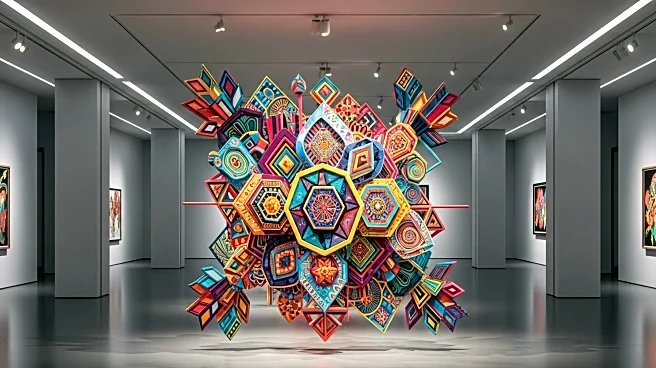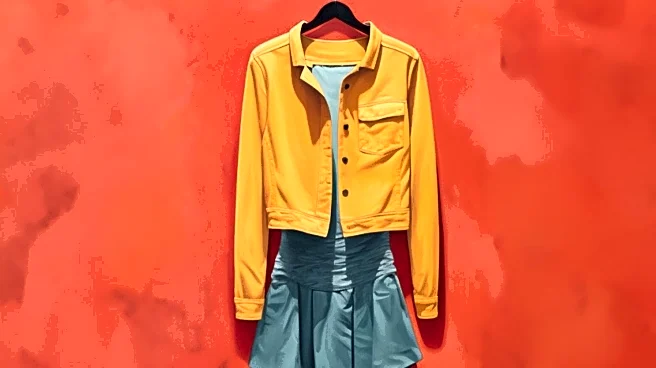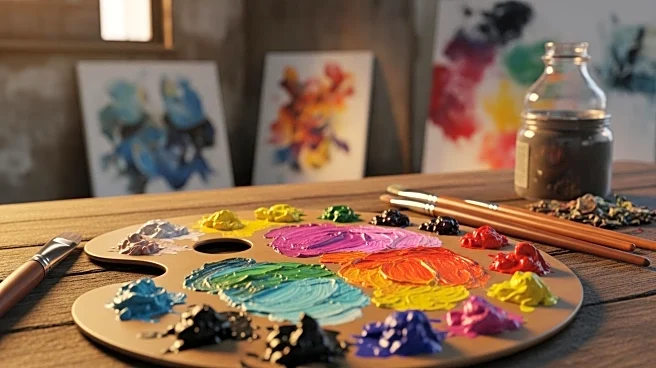What's Happening?
The Los Angeles County Museum of Art (LACMA) has installed a new art piece by Todd Gray titled 'Octavia Butler's Gaze' in its newly designed David Geffen Galleries. The installation is part of the museum's effort to create a dynamic and culturally interwoven art experience. The galleries, designed by Peter Zumthor, feature concrete walls and unique colored glazes, providing a modern backdrop for the art. Gray's photo sculpture, which includes images from various global locations, is the first artwork visitors will encounter upon entering the new space. The piece is designed to engage viewers in a dialogue about history, culture, and art, reflecting LACMA's mission to present art in a non-traditional, interconnected manner.
Why It's Important?
This installation marks a significant step in LACMA's approach to art presentation, emphasizing cultural intersections rather than traditional categorizations. By featuring Gray's work prominently, the museum highlights the importance of diverse narratives and historical contexts in art. This approach aligns with broader trends in the art world that seek to challenge conventional art history and promote inclusivity. The installation also serves as a subtle counter-narrative to recent political critiques of race-centered ideologies in museums, showcasing LACMA's commitment to cultural dialogue and resistance through art.
What's Next?
The new David Geffen Galleries are set to open in April 2026, with Gray's installation serving as a focal point for visitors. As the museum continues to develop its exhibits, it will likely face discussions and debates about the role of art in addressing social and political issues. The galleries' design, featuring large windows and innovative glazing techniques, may also spark conversations about the preservation of art in modern architectural spaces. LACMA's approach could influence other institutions to adopt similar strategies in presenting art that fosters cultural understanding and engagement.
Beyond the Headlines
The installation of 'Octavia Butler's Gaze' not only enriches LACMA's collection but also raises questions about the ethical responsibilities of museums in curating art that reflects diverse histories and perspectives. The piece's placement near galleries featuring African and Latin American art underscores the museum's effort to create a dialogue between different cultural narratives. This approach may inspire other museums to reconsider how they organize and present their collections, potentially leading to a shift in the art world towards more inclusive and interconnected exhibits.











